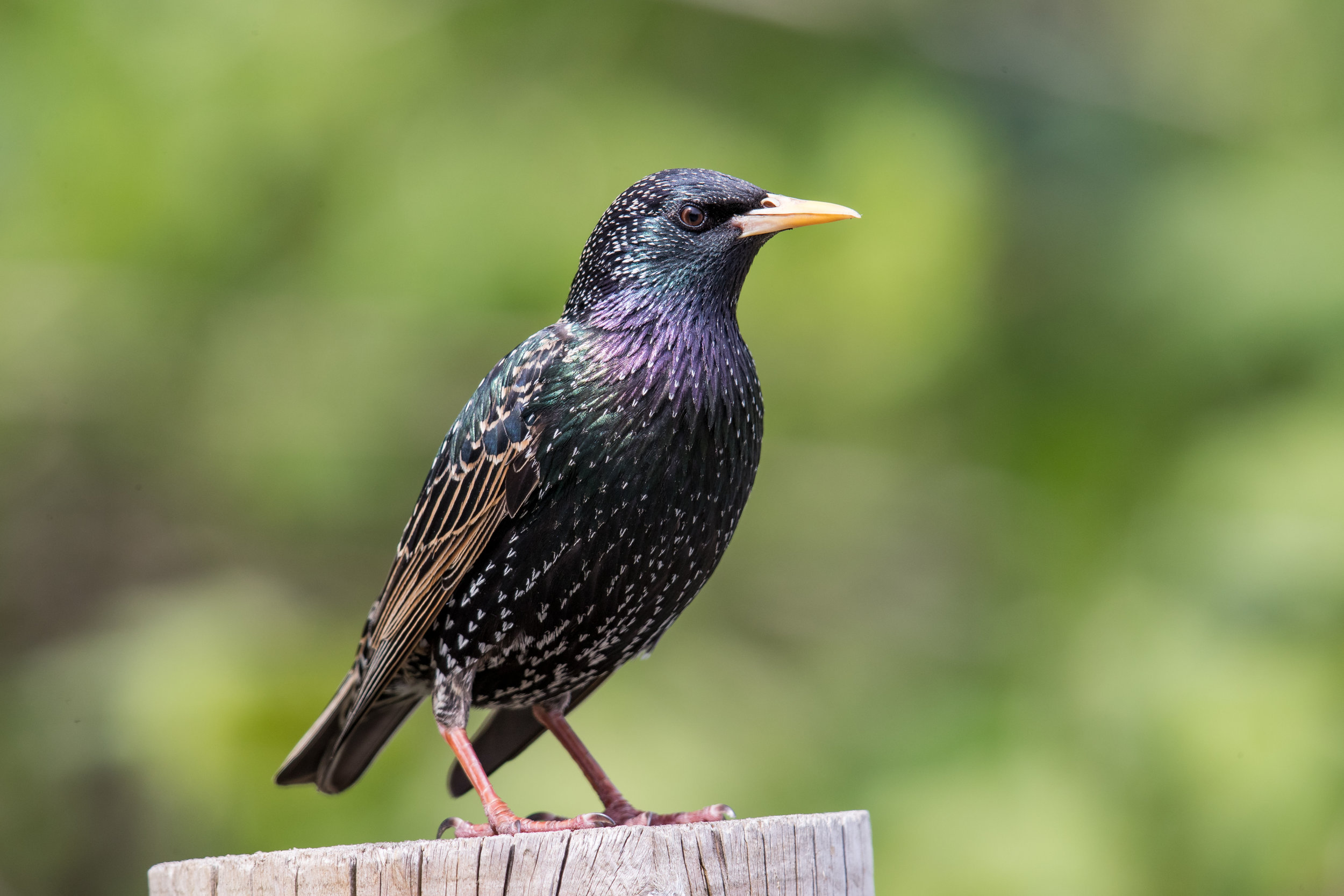Bird of the Month: European Starling
By Andy McCormick
PC: Mick Thompson (European Starling)
Scientific Name: Sturnus vulgaris
Length 8.5 in
Wingspan 16 in
Weight 2.9 oz
AOU Band code EUST
A recent birding trip to Europe stimulated me to write about a European bird we might see in North America. The European Starling is an obvious choice, although we also saw many House Sparrows.
The European Starling is the only starling in North America, but it is one of approximately 119 species of starlings worldwide in 34 genera in the family Sturnidae. Many starlings have glossy, colorful plumages, but the North American starling is an iridescent black.
Phenomenal Success since Introduction
“The success of the European Starling in North America is nothing less than phenomenal. Although estimates vary, it is commonly believed that a total of about 100 individuals was released into Central Park, in New York City, in 1890 and 1891. The entire North American population, now numbering more than 200 million and distributed across most of the continent, is derived from these few birds. This is arguably the most successful avian introduction to this continent” (Cabe). “Widespread and abundant in most of North America the introduced European Starling is arguably and problematically the most successful bird on the continent” (Alderfer).
A less praiseworthy assessment of the starling’s advance across North America considers it, “A real American. Established itself in the city. Moved to the suburbs. Kicked out the natives (cavity nesters like Red-headed Woodpecker, Purple Martin, and bluebirds). Now found virtually everywhere in North America” (Dunne). The accompanying map shows the starling’s range expansion over 80 years.
The European Starling belongs to the genus Sturnus, Latin for starling. The species name vulgaris is Latin for commonly found, or ordinary. Starling is from the Old English staerlin, from staer, the original word for starling, and the diminutive –line, which was probably added as a form of pet name (Holloway).
New Look with Worn Feathers
The European Starling molts in the fall and its new black plumage is covered with white spots. Over the winter the white spots wear away and drop off leaving an iridescence of green and purple tones on the shiny black plumage, which is considered the starling’s breeding plumage.
Comfortable with Humans
The starling is a cavity-nester and will find nesting sites in almost any tree, cactus, and rock outcroppings. However, it is well-adapted to living with human beings and uses buildings and other human-made structures as nesting sites. The nest is initially constructed by the male and finished by the female, and is composed of twigs, weeds, grass, feathers, and trash with a slight depression for the 4-6 eggs which are deposited. Incubation takes about 12 days. First flight occurs in three weeks. Starlings can have two broods per year (Kaufman).
The diet of the European Starling is varied and adaptable to its surroundings. Insects are the basis of the diet, and starlings will also eat seeds, grains, fruits, and berries. Human garbage and livestock feed will also be consumed. Starlings will often flock with blackbirds around livestock pens and farm silos.
Murmurations in the Skies
As fall approaches starlings group into larger flocks at roost sites. A number of videos showing the shape-shifting of enormous flocks of starlings have appeared online. These murmurations are fascinating and mesmerizing to watch and you can see a National Geographic video of one on YouTube . Aggregations of a millions starlings at a roost site are not uncommon, and can be a nuisance to people living nearby.
Management of large flocks of starlings have been frustrated by the species’ adaptability. Attempts to control the damage to agricultural crops, and to reduce fecal contamination of water supplies, have included shooting, trapping, and poisoning of large numbers of birds, usually without long-term success (Cabe).


